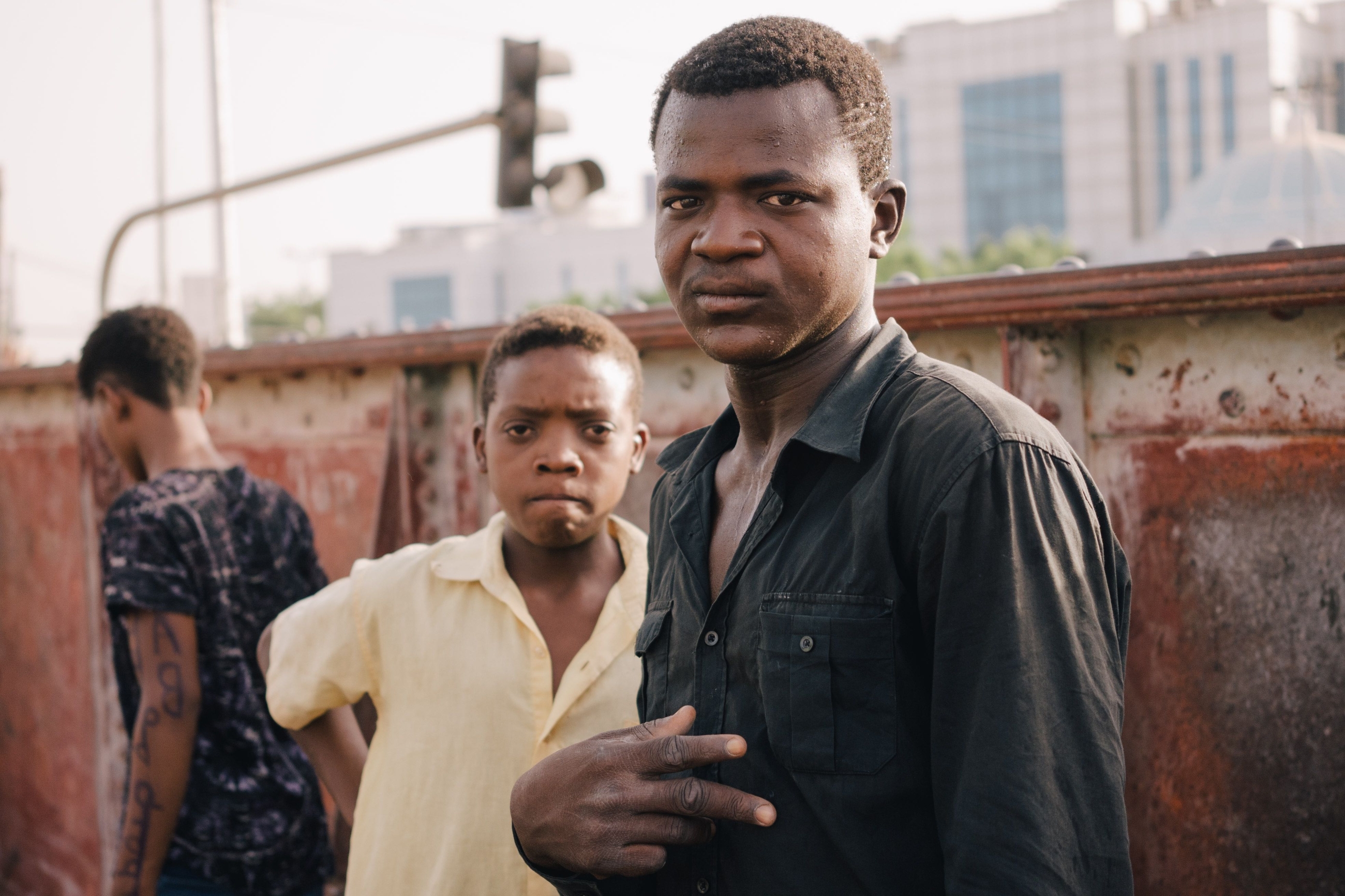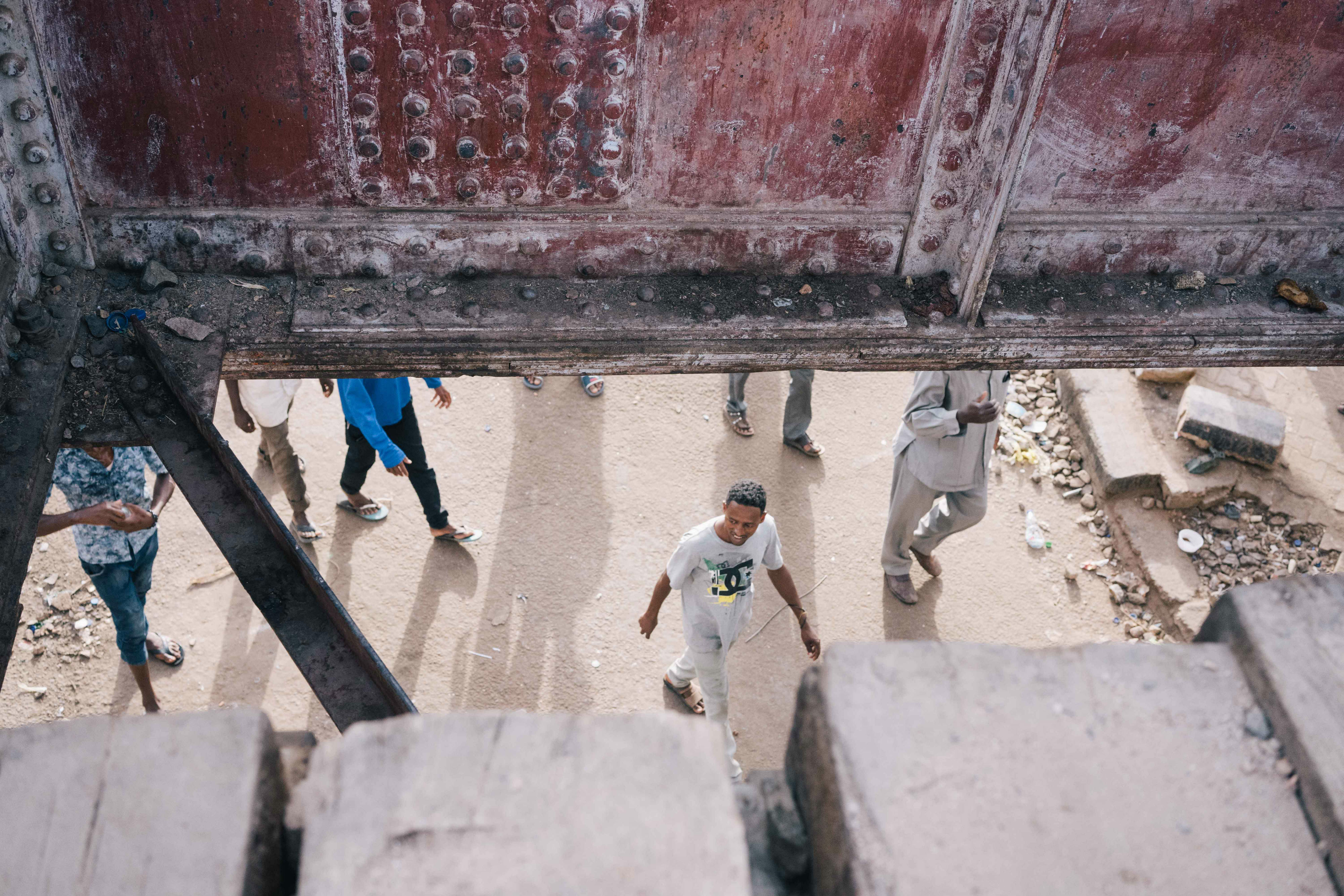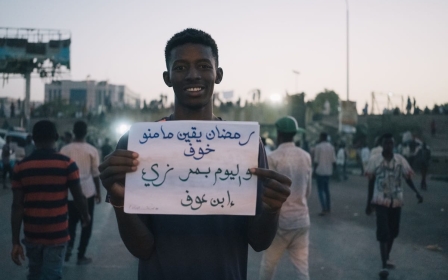Rhythm of the revolution: The iron heartbeat of Sudan's sit-in

There is a sound that emanates from the centre of Sudan's revolutionary sit-in, a weighty, metronomic pulse that comes from the rhythmic beating of solid iron through the day and night.
Groups of Sudanese youths relentlessly strike the railway bridge they have camped out on, while others, in the tunnel underneath, add an extra layer to the percussion by hammering away at sheets of scrap metal.
The Youth on top of the Bridge, as they have come to be known by the protesters around them, have become the tone-setters for the month-long sit-in outside the military headquarters in Khartoum, where thousands are refusing to leave until the armed forces hand power to a civilian government.
“When we bang this tunnel, their voices get louder,” said Abdulraziq, 19, who had been striking the iron bridge with a piece of rail stripped from the railway line. “The knocking is like the heart of congregation,” he says, the iron heartbeat of the movement.
The rhythm can be a heavy knock or more fast-paced. It often accompanies the popular chant, “Fall or no fall, we stay here,” Abdulraziq told Middle East Eye, but the aim is always to drive the enthusiasm of the protesters.
New MEE newsletter: Jerusalem Dispatch
Sign up to get the latest insights and analysis on Israel-Palestine, alongside Turkey Unpacked and other MEE newsletters
Unemployed, like many young Sudanese in the struggling economy, Abdulraziq had travelled from Ad-Damazin in southern Sudan to link up with the protests this week. He ended up joining the youth on the bridge. They never cease drumming against it, even in Sudan’s searing heat and while they fast during Ramadan.
They have become part of the environment, with the once off-limits military headquarters, Khartoum University and the area around it transformed into a sprawling, festival-like protest site.
The youth take turns drumming the rhythm but also spray water on protesters passing underneath the tunnel, to the irritation of some and appreciation of others.
'A message against the military'
Bilal Ahmed, 26, a university graduate whose family were originally from Darfur, mans a stall representing Sudanese minorities only a few metres from the bridge.
He said the noise they create has become a rallying call, as protesters begin to collectively chant their demands at the beginning of every hour.
“The banging is our resistance, it's iconic. A message against the military,” said Ahmed.
The sit-in began on 6 April when Sudanese protesters, who had already been demanding President Omar al-Bashir’s exit for almost four months, marked the anniversary of the last successful uprising in 1985.
Protesters climbed up onto the bridge, drawing comparisons to pictures from 1985 showing a previous generation doing the same thing.
Stories of how the youth ended up creating a long, constant soundtrack for the movement vary among protesters.
Some say it started during the dangerous early days of the sit-in, before Bashir was forced out on 11 April by the military, when security forces and militias under his rule would try to disperse the protesters. According to those accounts, the youth started banging against the bridge to warn other protesters to come.
Hamid Khalafallah, who has regularly been involved in the protests since they began in December, told MEE people originally climbed atop the bridge to get a better view of the crowds.
"Then they realised it makes a nice sound," he said, describing how the energy it created uplifted protesters as they tired through the day.
"This kind of energy is very inspiring to us. There are moments when you pass the tunnel and you really feel the positive vibes."
This article is available in French on Middle East Eye French edition.
Middle East Eye delivers independent and unrivalled coverage and analysis of the Middle East, North Africa and beyond. To learn more about republishing this content and the associated fees, please fill out this form. More about MEE can be found here.






